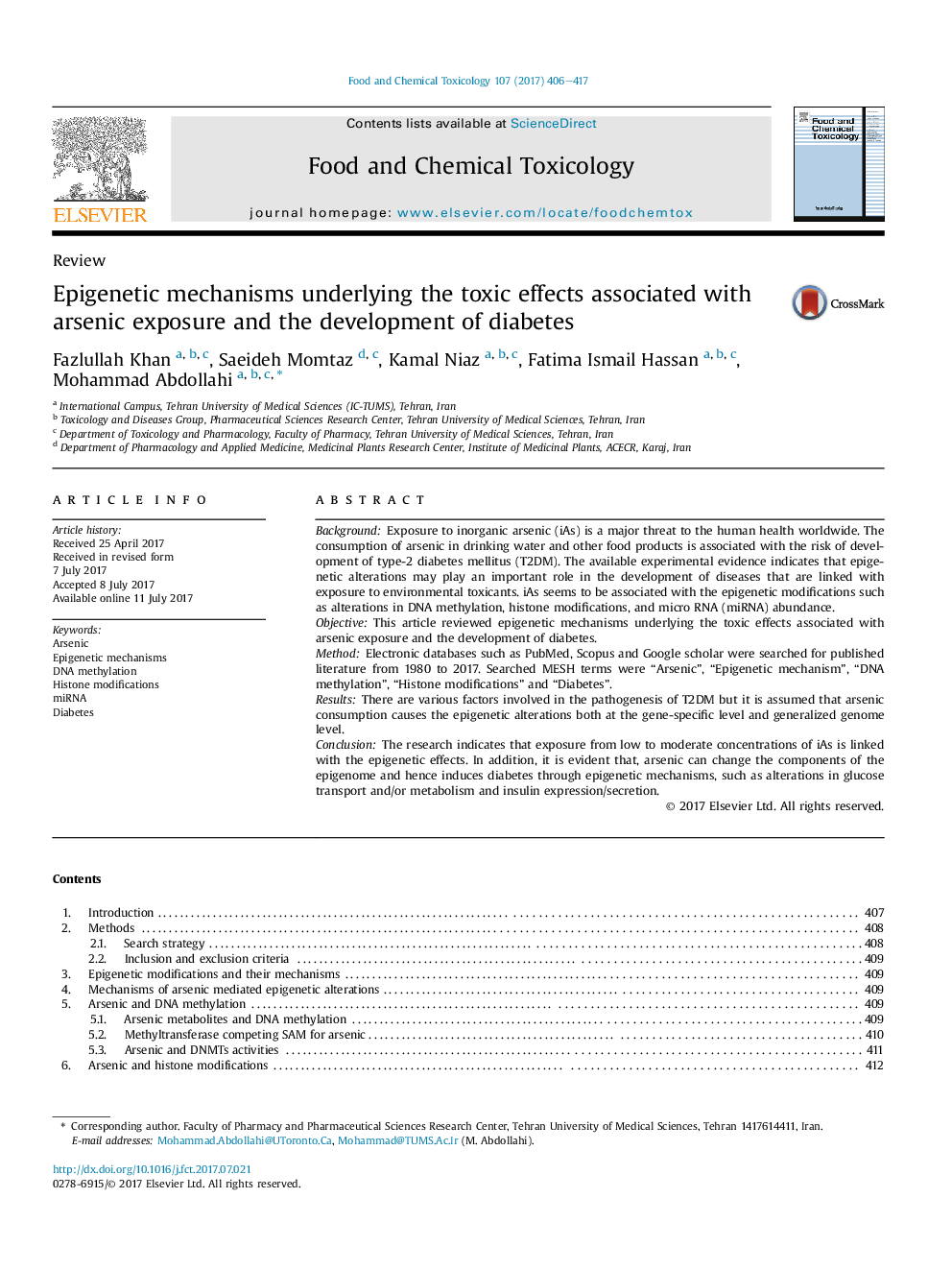| کد مقاله | کد نشریه | سال انتشار | مقاله انگلیسی | نسخه تمام متن |
|---|---|---|---|---|
| 5560053 | 1403308 | 2017 | 12 صفحه PDF | دانلود رایگان |
- Arsenic in the human food chain.
- Arsenic exerts epigenetics effects on gene specific basis and at genome level.
- Arsenic alters DNA methylation pattern.
- Arsenic impairs insulin-dependent glucose uptake leading to diabetes.
BackgroundExposure to inorganic arsenic (iAs) is a major threat to the human health worldwide. The consumption of arsenic in drinking water and other food products is associated with the risk of development of type-2 diabetes mellitus (T2DM). The available experimental evidence indicates that epigenetic alterations may play an important role in the development of diseases that are linked with exposure to environmental toxicants. iAs seems to be associated with the epigenetic modifications such as alterations in DNA methylation, histone modifications, and micro RNA (miRNA) abundance.ObjectiveThis article reviewed epigenetic mechanisms underlying the toxic effects associated with arsenic exposure and the development of diabetes.MethodElectronic databases such as PubMed, Scopus and Google scholar were searched for published literature from 1980 to 2017. Searched MESH terms were “Arsenic”, “Epigenetic mechanism”, “DNA methylation”, “Histone modifications” and “Diabetes”.ResultsThere are various factors involved in the pathogenesis of T2DM but it is assumed that arsenic consumption causes the epigenetic alterations both at the gene-specific level and generalized genome level.ConclusionThe research indicates that exposure from low to moderate concentrations of iAs is linked with the epigenetic effects. In addition, it is evident that, arsenic can change the components of the epigenome and hence induces diabetes through epigenetic mechanisms, such as alterations in glucose transport and/or metabolism and insulin expression/secretion.
Journal: Food and Chemical Toxicology - Volume 107, Part A, September 2017, Pages 406-417
